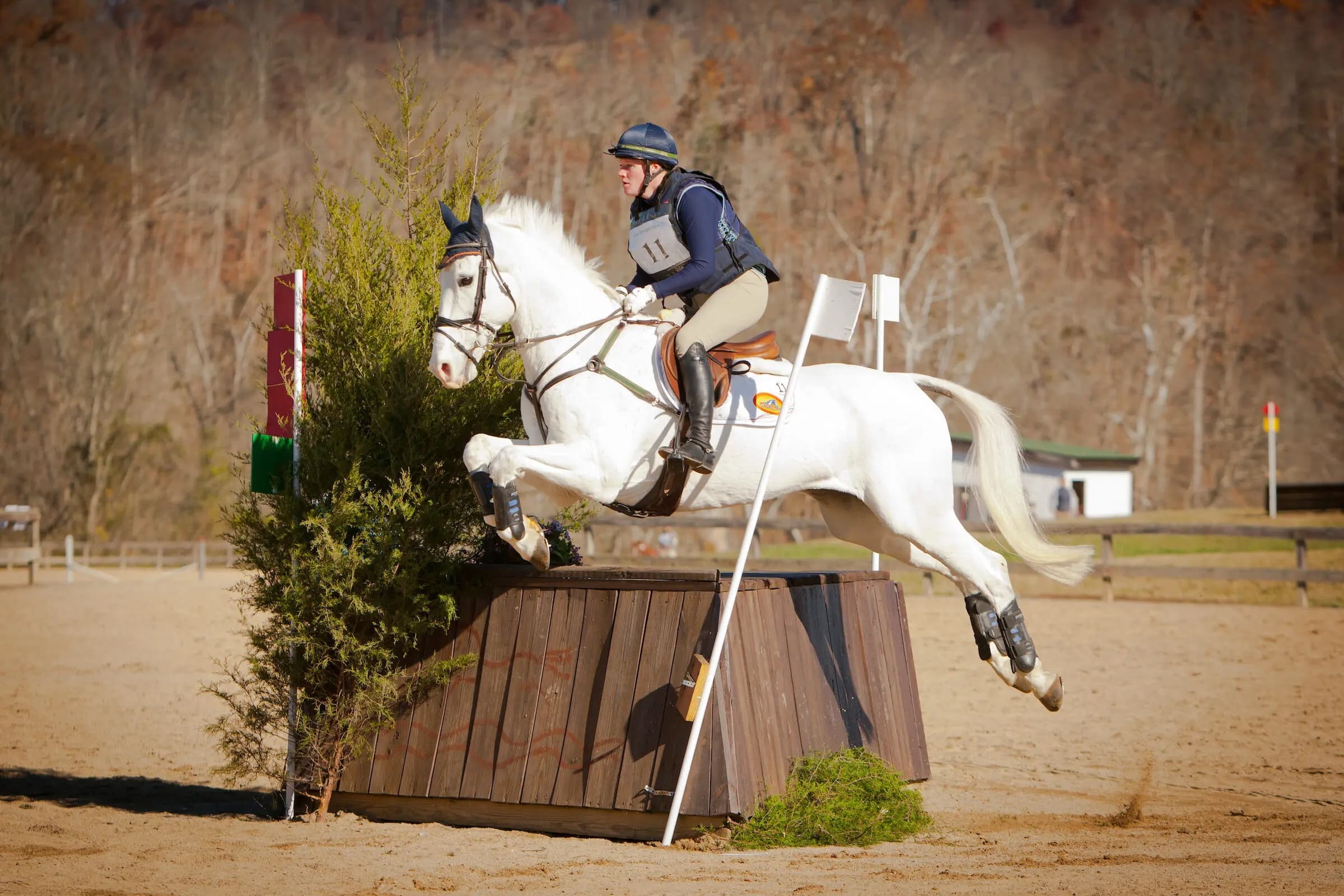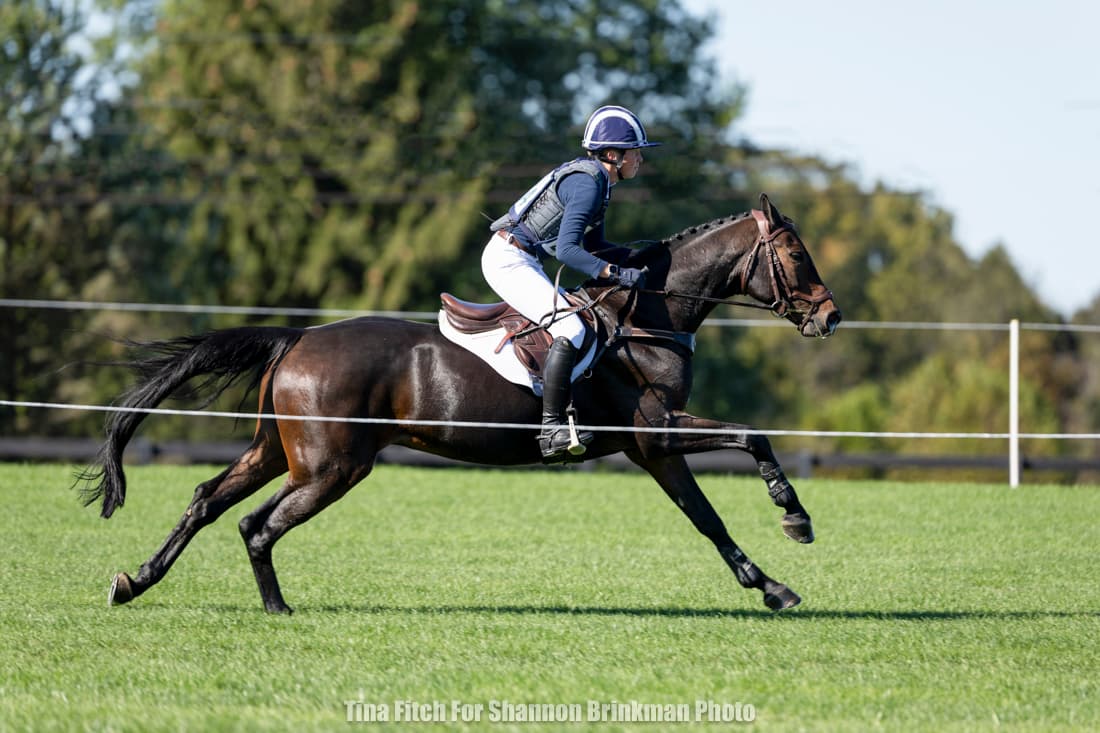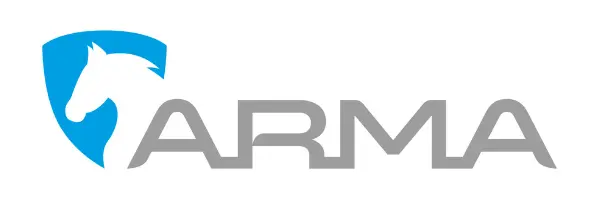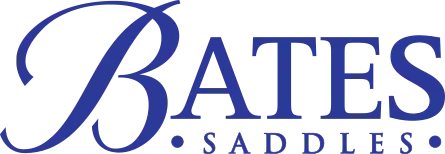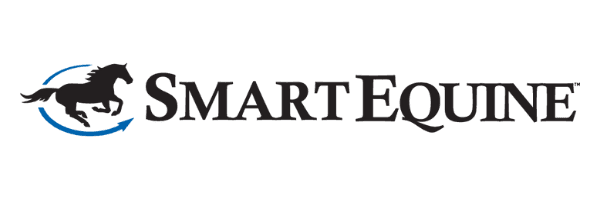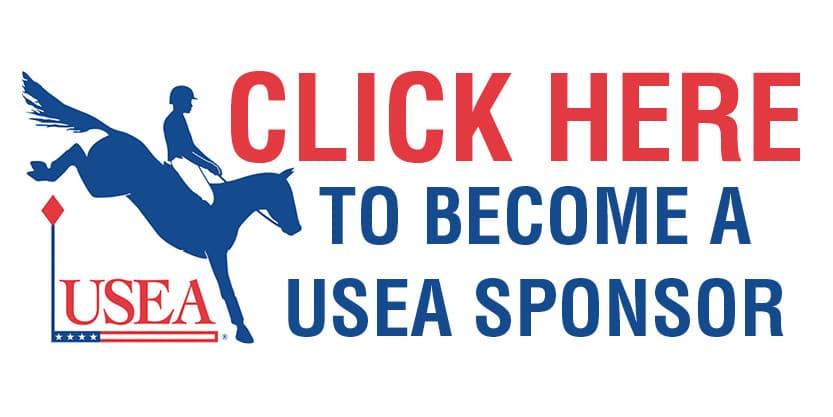2007 Convention - G10 Summit
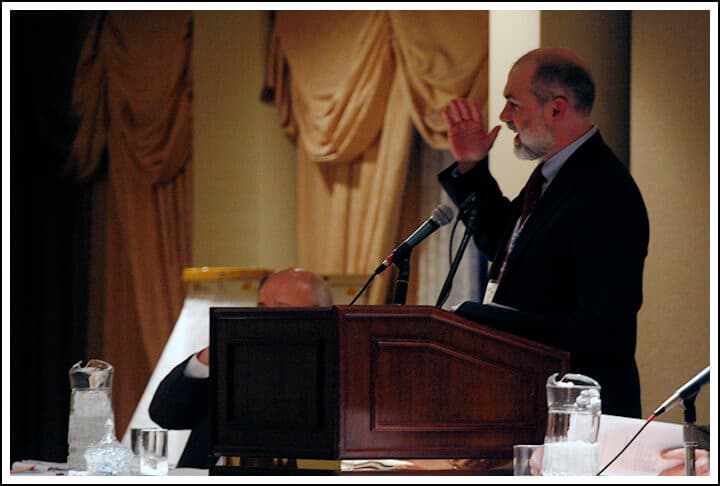
The much anticipated G10 Summit proved to be the high point of this year’s USEA Annual Meeting and Convention, presented by Nutrena. The Summit, which was held Saturday, December 8, was a gathering of all eventing enthusiasts involved in the sport, from organizers and officials to adult riders and young riders and everyone in between.
Kevin Baumgardner , the incoming USEA President, opened the Summit with a few words on the past year and how the USEA will prepare for the future. “This has been a difficult year for eventing, and the leaders in the sport should not flinch from addressing the issues that face us. We’re here to look at the big picture, trends, and diverse perspectives. No equestrian sport will be risk-free and we all have a responsibility to pull together and lead, educate, and influence.”
USEA Vice President of Competitions, Malcolm Hook, then discussed the concept of change within the sport: “We’re thinking about making changes, but we don’t want eventing to morph into something we no longer recognize or love. We need to talk about where we’ve been and look back to the 1990s to the wake of serious accidents that occurred then. There have been some very good changes in the philosophy of course design and there have been many initiatives to improve even further still, but we’ve yet to solve all the issues. The missing factor in this equation is the competitors themselves.”
Hook, who also serves as the chair of the USEF Eventing Technical Committee, said that one of the biggest changes hoped for in the coming year is the development of new qualifications, where “In order to move up, a competitor must have four qualifying results with four cross-country trips with no refusals. The approval for these new qualifications is high, because it’s essential to start rewarding excellence. This will only be for national competitions, since the FEI hasn’t yet shown a move in this direction, but we’re hoping that the FEI will follow suit,” he explained. “We are proposing that there will be no move up with jumping penalties. The qualifying period proposed will be in the 24 months prior to the competition and at least one qualifying score must be within four months of the competition.”
As of press time, these new requirements have not been put into place, as they will need to be part of the rule change process for 2008. All rule change proposals are put before the USEF Board of Directors at the USEF Annual Meeting for approval on January 13. “When does it go into effect? It should be immediate,” Hook said. “Perhaps very early in 2008. We don’t want the chaos of people discovering that they’re not qualified. This will be something that the IT department at the USEA will be working on. You will, however, be grandfathered in if you’ve already competed at a higher level without these new qualifications,” added Hook. “We will keep the current system—the horse and rider must be qualified, but not necessarily as a combination.”
Rider Responsibility … Period!
USEF President David O’Connor and J.J. Johnson discussed the results achieved so far by the special FEI, USEF, and USEA committees reviewing the sport both internationally and nationally. J.J. Johnson, chair of the USEA Eventing Review Task Force said, “We set up the Eventing Review Task force to study the future of the sport, especially at the training and preliminary levels, looking closely at the technicality aspect. We have considered moving into a two-track system for a number of reasons: one, to lessen the gap between Training and Preliminary; two, to look at the Young Rider, Amateur, and Young Horse divisions; three, to allow for a window for optimum time; and four, to teach rider responsibility. We’re also working on mandatory course descriptions for each course, where guidelines will thoroughly describe the terrain, footing, types of jumps, et cetera. The qualifications would be more stringent and there may even be a training level three-day qualifier.”
O’Connor spoke about determining accident trends, taking preventative measures, and educating riders and trainers. “We can change the sport in a lot of ways—construction of fences, safety equipment, rule changes, et cetera. We can go down the road of wearing big, motorcycle helmets. None of those things will pose a problem, but will these initiatives significantly reduce risk? What it comes down to is how we educate our riders. We need to give them the tools to make the right decisions. They’re coming out of urban environments, so how do we educate them? …We do know that the future will be about rider responsibility. It’ll be about education of the rider, coach, and trainer. There is no one single solution and it is going to take a cocktail of different medications.”
Statistics reveal that the majority of falls are occurring at a single fence in an open field and O’Connor stated that riders need to be taught how to safely jump such an obstacle using appropriate pace and correct preparation techniques. (The ICP presentation focused heavily on the necessity for proper preparation when jumping out in the open with demonstrations by Mark Phillips with assistance from Karen O’Connor- See below.
O’Connor said that yes, of course the USEA wants more participants, but we want them to be responsible [for themselves and their horses]. “The same questions are being asked in every country, ‘How do we get our riders educated?’ One person’s accident affects all of us.” Hopefully these accidents can be prevented with licensed and capable instructors available for everyone in our sport. “I hear some dangerous teaching when I am in the warm-up arena. It is obvious that much of the coaching being done on a weekly basis isn’t up to standard. Every coach should have a certification, because education of riders is paramount,” O’Connor added.
Ultimately, rider responsibility was a theme that was reiterated over and over again during the weekend. “Yes, speeds haven’t changed,” said O’Connor, “but technicality has. So should we change the speeds at some levels? If you want to go inside the time and get a blue ribbon, then you need to be competent, but no one’s saying you have to go that fast. It’s the rider’s responsibility to decide when their horse is ready to go faster on course. You go to win when you’re ready to win. It should be about the pursuit of excellence. If you’re excellent at what you do, then you’ll win.”
Beyond the Obvious: Social changes, marketing, training methods and a generation of urban living. Where is it taking us? – Eric Smiley
Perhaps one of the most insightful speakers during the Summit was Irish Olympic rider, trainer, and eventing guru Eric Smiley who, through years of experience, has seen riding and training trends developing world wide. “There’s no simple solution, no straightforward answer. We need to look beyond the obvious, look deeper.” Smiley pointed out that in Ireland, the public is considered to be two generations removed from country life. In England it is five generations removed from the country which means people are no longer familiar with country ways, terrain, animal behavior and riding in the open among other things. “We’re quick to blame a variety of things—urban versus rural upbringing, the speed of change, education, and authority—people are much more likely to be free thinkers and not as willing to accept authority and responsibility. We blame the changes in the sport: long format to short format [which alters riders’ mindsets], technical fences, and endurance elements.”
Know Yourself, Know Your Horse
Smiley, like O’Connor, stressed the fact that ultimately it comes down to the rider’s responsibility. “The rider needs to know what they’re responsible for. They need to ride out in the countryside, in fields, and develop a feel. It’s the responsibility for themselves, to set their own boundaries. You’re responsible for your horse, so it’s vital that you actually ‘know your horse’—spend time with them, learn their personality and psychology. Learn how they communicate.” One of the key components to a successful partnership between horse and rider, said Smiley, is a good trainer. “No logic says a good rider should happen to be a good coach. If you’re both, you’re lucky. If not, then you need to practice the skills of communicating. Don’t aim too high. A trainer must teach the basic skills first. The rider needs to learn the skills, and the trainer needs to teach them. What do you want the horse to do? We need to encourage communication skills between horse and rider as well. Instead of ‘use more leg,’ they need to get more from the leg they’re using. Trainers need to think about what they’re saying,” explained Smiley, who also discussed the consequences of overbitting, which he believes allows riders to cut corners, instead of mastering the basics. Smiley also touched on the technical aspects of the sport: rider licensing, refusing entries, outlawing certain bits, limiting the horse’s age at certain levels, over-competing our horses, accreditation and monitoring. “We need to make education worth their while. Give them the competition skills they’ll need to be successful. After all, the welfare of the horse is primary. He can only do his job if we do ours.”
Young Riders Get Exciting Opportunities
USEA Young Rider Coordinators Tim Murray and Jan Byyny (right) presented some of the new developments within this talented group of up-and-coming riders. While qualifying for and attending the NAJYRC (North American Junior and Young Riders’ Championships) offers a once-in-a-lifetime opportunity those who are capable, the Young Rider Committee representatives said that they realize this is a tough goal to attain. This is a “Junior Olympics” to many Young Riders who have the funds (or work hard to raise them), the mount, and the time to pursue this elite competition and will continue at the level it currently is (CCI* and CCI2*).
For those active Young Riders who may not have the means or desire to achieve the goal of competing at NAJYRC, Murray and Byyny discussed the development of a mentorship program to introduce these young adults to the other aspects of eventing. They would be partnered with officials, judges, course designers, volunteers, and anyone else highly involved in our sport to counsel the riders on what their job entails—a great way to be involved and learn new views of the sport in addition to the one from the saddle!
Adult Riders Strive for Safety

Cindy DePorter, incoming Adult Rider Committee chair, took to the podium with outgoing chair Patte Clement. The pair listened to riders concerns about safety and took suggestions from the audience such as putting more in-depth contact information on the medical armbands (such as a copy of the driver’s license and insurance card), joining the U.S. Rider Equestrian Motor Plan and teaming up with local ICP-certified instructors at competitions. John Nunn, longtime USEA sponsor and owner of Bit of Britain Saddlery and Nunn Finer, reminded attendees that Nunn Finer sponsors free course walks at many popular events across the country. Led by upper level riders, these walks are called “Through the Eyes of a Nunn Finer Rider” and are available to anyone at no charge. To find out more about these course walks, which were launched in 2003, visit www.nunnfiner.com.
(Right: Patte Clement (left) and Cindy DePorter answer questions about the new developments in the Adult Rider program)
According to DePorter, the Adult Rider Program, which makes up most of the active eventers in this country, will be booming this year, with all sorts of new riding clinics, health talks, discounts, and awards to be given. If you’re an adult rider and haven’t yet joined this fun and successful program, visit the Adult Riders of the USEA website or check the Omnibus for the contact information of your Area Chair who can put you in contact with the right group.
Organizers Want Eventing Safe and Fair
Organizers Committee chair Penny Ross (pictured below left) admitted to the group that it was a little uncomfortable talking about changing certain rules and qualifications in eventing, considering the increased labor and cost they might entail, but added that she appreciated the fact that everyone was communicating respectfully, and that event organizers are also dedicated to making the sport as safe and fair as possible. “We want to do what’s best for you, the horses, and the sport and we’re open to reasonable suggestions,” said Ross, who organizes several horse trials a year with her husband Brian.
Options were discussed regarding how to eliminate some of the negative consequences increased rules and requirements might bring such as rising costs, the need for more volunteers, and scheduling issues.
So what can we do to make their lives easier? Volunteer! Some Areas (Area II, for example) offer volunteer incentive programs, such as having inclusion in year-end awards require a certain number of hours of volunteer work. It may seem tedious, but volunteering can be not only a fun, but an educational experience. Ask any organizer… the sport wouldn’t be possible without the thousands of volunteers across the nation that make the more than 250 recognized events (not to mention schooling shows and clinics) possible.
What else can competitors do to help? Writing legibly on your entry form saves the organizers a lot of time from trying to decipher less than clear handwriting, and typed entries are even more welcome. Also, make sure to complete each question as requested (especially the section allowing you to rank the divisions from most to least preferred). And, last but not least, don’t forget to thank the event’s sponsors. Their donation to the event helps more than you know!
The USEA Instructors’ Certification Program
If you ask anyone in attendance, probably the highlight of the ICP presentation was Captain Mark Phillips, Chef d’ Equipe of the U.S. team, perched on a chair to demonstrate proper galloping position, while Karen O’Connor helped balance his “trusty steed.” Though the audience most likely held their breaths as the chair teetered treacherously on the stage, with his demonstration Capt. Phillips and O’Connor helped clear up many misconceptions about proper balance on cross-country and answered questions about the preparation period when approaching a cross-country obstacle, as well as the importance of the ICP program.
“We’re not trying to take away from anyone’s particular teaching style or mandate a specific type of teaching style. You can be creative as you want! We’re lucky to have great minds to share information from, which in the end will educate us all and make us better instructors,” Karen O’Connor said.
The three-time Olympian made sure to emphasize the “preparation period,” which is about five to six strides away from the obstacle. This is where many riders run into trouble, not properly setting their mount up for the upcoming effort. “This is the most important aspect—the transition between the gallop between fences and the actual jump. It’s completely the rider’s responsibility to set up a rhythm and pace and monitor it until the jump. Most importantly, the rider must ride forward and be positive,” O’Connor explained.
The type of jump and the jump face (the front of the jump) can have a lot to do with the preparation for a specific type of obstacle. “Look at the jump type, but also look at the landing, the terrain, the take-off point, and your path to and from that jump. If it’s a vertical or narrow jump face, you’ll need to slow him down and balance his center of gravity over his hind end and enable his “spring” to be stronger in take-off,” O’Connor said.
Capt. Phillips added a few more safety tips and rider awareness points such as “keeping your hip over your knee in galloping position … using the same canter for technical fences on cross-country as in show jumping, and working in the center of the horse’s gravity – the ‘power neutral.’” In closing he said, “The ICP is completely devoted to making cross-country safer. We want to make it look like it’s easy for the horse and rider by giving you the tools to succeed.”
The USEA would like to thank all the presenters who made the inaugural G10 Summit such a success. It is our sincere hope that the information, advice and recommendations coming out of this Summit, and indeed all the meetings at the USEA Convention, will help all our riders as they continue to pursue excellence in their eventing skills and in so doing help to make our sport safer and more enjoyable.

